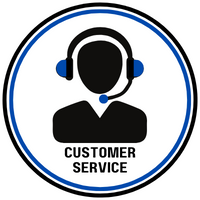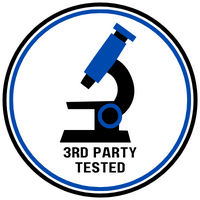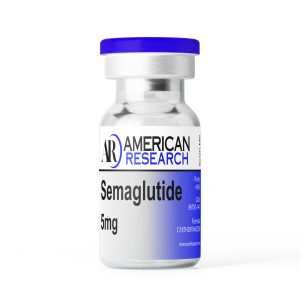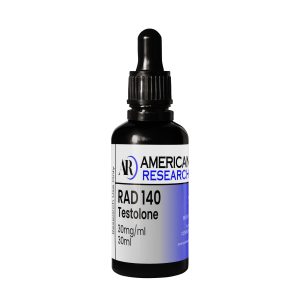Description






RAD140
Liquid: 30mg/ml – 30ml
Chemical Formula: C20H16ClN5O2
Molecular Mass: 393.8
Other Names: 2-chloro-4-(((1R,2S)-1-(5-(4-cyanophenyl)-1,3,4-oxadiazol-2-yl)-2-hydroxypropyl)amino)-3-methylbenzonitrile, RAD 140, Testolone
Molar Mass: 288.42
CAS Number: 1182367-47-0
PubChem: 44200882
Shelf Life: 36 months
Peer-Reviewed Studies
Abstract
Introduction/background: This first-in-human, phase 1 study aimed to characterize the safety, tolerability, maximum tolerated dose (MTD), pharmacokinetic (PK) profile, and antitumor activity of RAD140, an oral selective androgen receptor (AR) modulator (SARM).
Patients and methods: This dose-escalation study with a 3 + 3 design and PK expansion cohort enrolled postmenopausal women with ER+/HER2- metastatic breast cancer (mBC). Serum sex hormone-binding globulin (SHBG) and prostate-specific antigen (PSA) were used as surrogate markers of AR engagement.
Results: Twenty-two (21 AR+) heavily pretreated mBC patients were enrolled. Dose levels included 50 mg (n = 6), 100 mg (n = 13), and 150 mg (n = 3) once daily (QD). Most frequent (> 10%) treatment-emergent adverse events (TEAEs) were elevated AST (59.1%), ALT (45.5%), and total blood bilirubin (27.3%), and vomiting, dehydration, and decreased appetite and weight (27.3% each). Grade 3/4 TEAEs occurred in 16 (72.7%) patients and included elevations in AST/ALT and hypophosphatemia (22.7% each). Treatment-related TEAEs occurred in 17 per 22 patients (77.3%); 7 (31.8%) were Grade 3; none were Grade 4. The half-life (t1/2) of 44.7 hours supported QD dosing. At the MTD of 100 mg/day, 1 patient with an ESR1 mutation at baseline had a partial response. Overall, clinical benefit rate at 24 weeks was 18.2%, and median progression-free survival was 2.3 months. SHBG decreased in 18 per 18 patients, and PSA increased in 16 per 20 patients. Paired baseline and on-treatment tumor biopsies demonstrated AR engagement.
Conclusion: RAD140 is a novel oral AR-targeted agent for the treatment of AR+/ER+/HER2- mBC with an acceptable safety profile and preliminary evidence of target engagement and antitumor activity.
RAD-140 Drug-Induced Liver Injury
Abstract
Background: RAD-140, one of the novel selective androgen receptor modulators (SARMs), has potent anabolic effects on bones and muscles with little androgenic effect. Despite the lack of approval for its clinical use, RAD-140 is readily accessible on the consumer market. Hepatotoxicity associated with the use of SARMs has only rarely been reported in the literature.
Case Report: A 24-year-old male presented with a 2-week history of diffuse abdominal pain, scleral icterus, pruritus, and jaundice. Prior to presentation, he had been taking the health supplement RAD-140 for muscle growth for 5 weeks. He had a cholestatic pattern of liver injury, with a peak total bilirubin of 38.5 mg/dL. Liver biopsy was supportive of a diagnosis of RAD-140-associated liver injury characterized pathologically by intracytoplasmic and canalicular cholestasis with minimal portal inflammation. Symptoms and liver injury resolved after cessation of the offending agent.
Conclusion: To date, only select descriptions of the potential hepatoxicity associated with the use of SARMs, including RAD-140, have been published. Given their potential hepatoxicity and ready availability on the consumer market, RAD-140 and other SARMs should be used judiciously and under close clinical supervision until further hepatic safety data become available.
Abstract
Selective androgen receptor modulators comprise compounds that bind as ligands to the androgen receptor and possess tissue-selective activities. Ideally, they show agonistic properties in anabolic target tissues, while inducing antagonistic or only weak agonistic effects in reproductive organs. Due to their myoanabolic effects, selective androgen receptor modulators are included in the list of prohibited substances and methods of the World Anti-Doping Agency. In the current investigation, the androgenic potential of RAD-140, GSK-2881078 and GLPG0492 was comparably investigated in two different in vitro bioassays. In the yeast androgen screen, the androgenic effects were lower than in the reporter gene assay in prostate carcinoma cells (e.g. for GSK-2881078, the EC50 values were 4.44 × 10-6M in the yeast screen and 3.99 × 10-9M in the prostate cells respectively). For future investigations, it is of importance whether the yeast androgen screen, which has been proven to detect androgenic compounds in urine, can detect an abuse of the selective androgen receptor modulators. Molecular modeling of the binding to the androgen receptor ligand binding domain suggests slight differences in the binding modes of RAD-140, GSK-2881078 and GLPG0492. In conclusion, androgenic activity of the three non-steroidal compounds in the two different in vitro test systems confirmed the results of the in silico modeling of the androgen receptor binding.
By purchasing from AMERICAN RESEARCH, you agree that you are purchasing Research Chemicals. AMERICAN RESEARCH products are furnished for LABORATORY RESEARCH USE ONLY.
This product should only be handled by qualified and licensed professionals. The product may not be used as a drug, agricultural or pesticide product, food additive, or household chemical – and may not be misbranded as such. All information on this website is available for educational purposes only. Bodily introduction of any kind into humans and/or animals is strictly forbidden by law.
*Research chemicals are chemical substances used by scientists for medical and scientific research purposes. One characteristic of a research chemical is that it is for laboratory research use only; a research chemical is not intended for human or veterinary use. This distinction is required on the labels of research chemicals and is what exempts them from regulation under parts 100-740 in Title 21 of the Code of Federal Regulations (21CFR).
ALL ARTICLES AND PRODUCT INFORMATION PROVIDED ON THIS WEBSITE ARE FOR INFORMATIONAL AND EDUCATIONAL PURPOSES ONLY.
The products offered on this website are furnished for in-vitro studies only. In-vitro studies (Latin: “in glass”) are performed outside the body. These products are not medicines or drugs and have not been approved by the FDA to prevent, treat and/or cure any medical condition, ailment or disease. Bodily introduction of any kind into animals or human is strictly prohibited by law.








